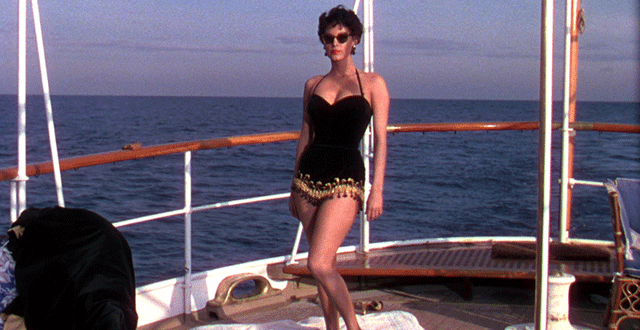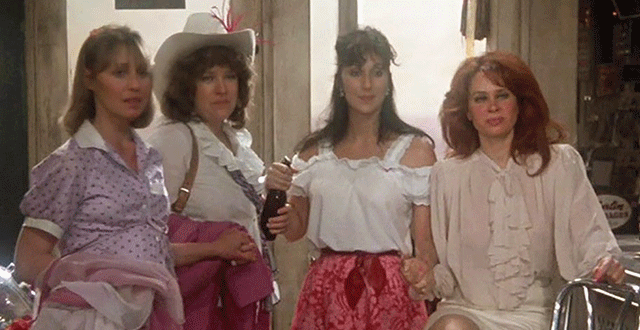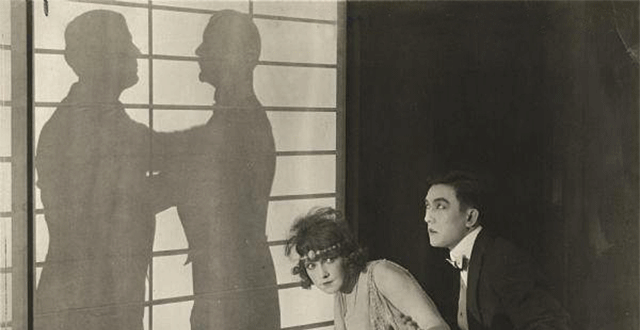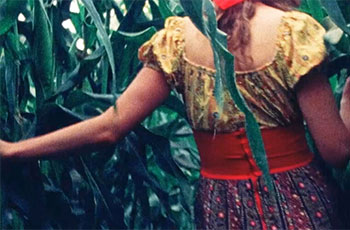News
Home viewing: Martin Scorsese’s World Cinema Project No. 3
Michael J. Casey
In 1990, Martin Scorsese brought together a band of cinema enthusiasts to protect motion picture history by creating The Film Foundation (TFF) — a bridge between Hollywood studios and archives. Its mission: Preserve America’s visual art form for future generations. Thirty years in and 850 restorations later, TFF remains a beacon of hope in a myopic industry.
But American borders couldn’t contain Scorsese’s catholic tastes. In 2007, he established the World Cinema Project (WCP) to focus on the works made in countries not typically associated with cinema. To date, 42 films from Africa, Asia, Eastern Europe, Central America, South America and the Middle East have been rescued, restored, preserved and exhibited for a global audience. And on Sept. 29, The Criterion Collection releases the latest box set of cinematic discoveries, Martin Scorsese’s World Cinema Project No. 3: After the Curfew (Indonesia), Dos monjes (Mexico), Downpour (Iran), Lucía (Cuba), Pixote (Brazil) and Soleil Ô (Mauritania).
Of the six, Pixote is the most familiar to U.S. viewers as it garnered a bevy of acclaim and awards upon its release in the early 1980s. It was director Héctor Babenco’s third feature, made after authorities shut down the documentary he was working on about abandoned children stuck in the reform school system. No biggie: Babenco took what he’d seen and translated it into a scripted narrative à la William A. Wellman’s Wild Boys of the Road and Luis Buñuel’s Los olvidados. The result is a powerful work that feels completely authentic, no matter how grisly the story gets.
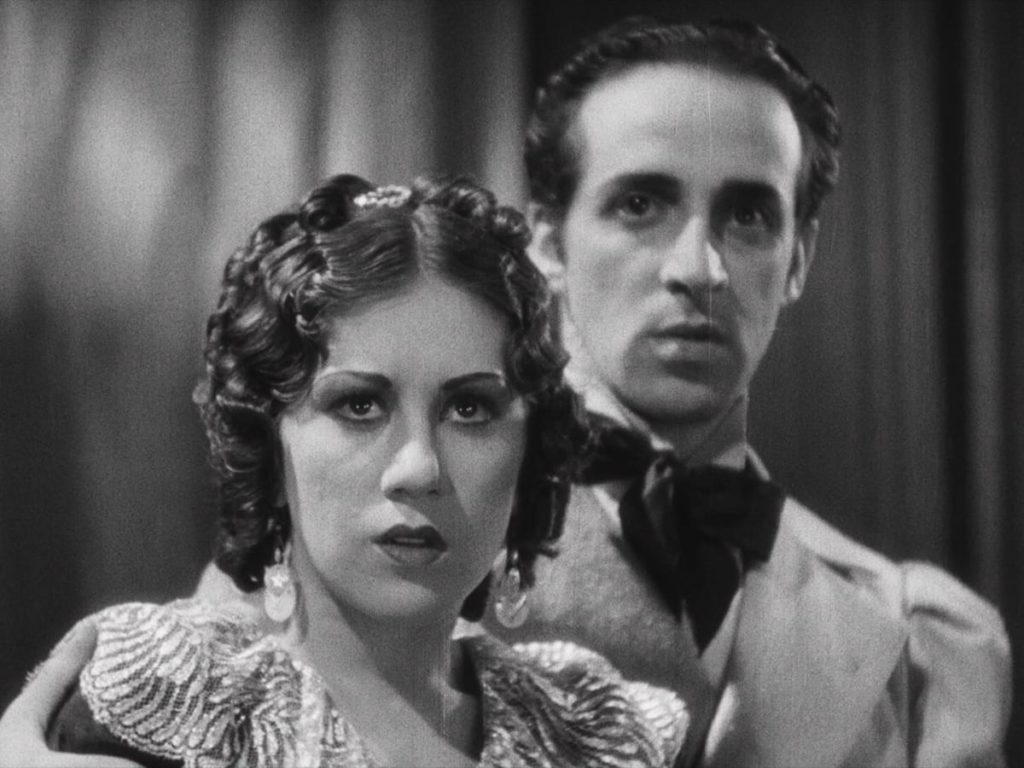
Probably the least familiar movie in the set is the 1934 Mexican melodrama from Juan Bustillo Oro, Dos monjes — a movie unknown to Scorsese when the title was offered for restoration. But Dos monjes’ exemplary blending of contradicting narrators, gothic horror, expressionistic photography and exaggerated set designs proves that what we don’t know could fill the sky.
Cinema is everywhere, and Scorsese’s work is never done. In 2017, TFF partnered with UNESCO, Cineteca di Bologna and the Pan African Federation of Filmmakers for the African Film Heritage Project — an initiative to locate and preserve 50 classic African films.
Soleil Ô from director Med Hondo was the first film restored under the banner, and the film is a revelation. Blending animation, documentary and narrative, Hondo follows an African immigrant (Robert Liensol) looking for work in an intolerant France, one that refuses to look at him, let alone employ him, while simultaneously stripping him and his country for parts. “I am bleached by your culture,” he muses.
Made over three years for $30,000, Hondo describes Soleil Ô as therapy: “For everything that disturbed me in both my physical and moral life, after all that I’d been through, that others had been through.” Not long after the restoration of Soleil Ô, Hondo died at the age of 82. Thankfully, his experiences and images live on.

Each of the six films included in Martin Scorsese’s World Cinema Project No. 3 are new, restored 4K digital transfers complete with introductions from Scorsese, interviews with filmmakers and scholars, and a substantial booklet collecting essays on each film.
COMMEMORATING 30 YEARS OF TFF
The Film Foundation has facilitated the restoration and preservation of two films by Joseph L. Mankiewicz. One of them, All About Eve, is one of the enduring classics of world cinema. The other, The Barefoot Contessa, restored by UCLA, is certainly well known but it’s less often discussed now. My wife and I took a fresh look at it about a month ago and we were both amazed and moved.
There have been many Hollywood movies about Hollywood that operate under the pretense of frankness but that, in the end, are nothing of the kind. I’m a fan of Vincente Minnelli’s films, but The Bad and the Beautiful and Two Weeks in Another Town, wild melodramas set in the milieu of Hollywood (and Hollywood on the Tiber), have a refracted, prismatically re-directed view of Hollywood itself. The same is true of George Cukor’s 1954 remake of A Star Is Born, a film that I love. But The Barefoot Contessa—shot in stunning Technicolor by the great Jack Cardiff—really stands alone, because it looks directly into the face of the ruthless exploitation of women practiced by powerful men in and around the world of big budget moviemaking. Ava Gardner’s Maria Vargas is courted by one filthy rich man after another (played by Warren Stevens, Marius Goring and Rossano Brazzi), each of whom promises glory but delivers possessiveness and a increasingly refined forms of debasement. It’s impossible to overestimate how rare such frankness and brutal honesty were during the high Hollywood era. Most movies made after the establishment of the production code, even great ones, fell back into soft cushions of decorous gentility when it came to wealth and power, and the ruthlessness was assigned to a few bad apples. Here, it’s the way almost everyone operates. It’s interesting to compare the publicists played by Jack Carson in the Cukor film and by Edmund O’Brien in The Barefoot Contessa. Carson’s character is judged to be mean and crass…by Charles Bickford’s kindly studio head! O’Brien’s unctuous, sweaty Oscar veers in the direction of whoever holds the power in any given situation, and for him, the virtues of honor, fidelity and respect espoused and practiced by Humphrey Bogart’s director are sentimental holdovers and beside the point. And there is absolutely no gentility whatsoever in Mankiewicz’s portrait of the jet set gathered around the roulette tables and the watering holes of the Riviera. They are lowlifes in fashionable dress.
At the emotional center of The Barefoot Contessa is Bogart’s Harry Dawes, the man who makes Maria a star fully knowing that it will ultimately lead to her destruction. No other actor could have played the role. From the 40s on, Bogart was one of the greatest artists in movies, and this is one of his most beautiful and heartbreaking incarnations of broken disenchantment.
- Kent Jones
Follow us on Facebook, Instagram, and Twitter!
ALL ABOUT EVE (1950, d. Joseph L. Mankiewicz)
Preserved by The Museum of Modern Art with funding provided by The Film Foundation.
THE BAREFOOT CONTESSA (1954, d. Joseph L. Mankiewicz)
Restored by UCLA Film & Television Archive in cooperation with MGM Studios with funding provided by The Film Foundation and Robert B. Sturm.
Out of the Vaults: Come Back to the 5 and Dime Jimmy Dean, … (1982)
Meher Tatna
In the wake of a series of unsuccessful movies like Quintet, A Perfect Couple, and Health, culminating with the tanking of Popeye in 1980, director Robert Altman sold his film company to Lions Gate, pulled up stakes in Los Angeles, and moved to New York with the idea of working in the theater and adapting plays for films. He vowed never to work with big film studios again.
The first project he took on was the direction of the Broadway production of Ed Graczyk’s play Come Back to the 5 and Dime Jimmy Dean, Jimmy Dean. The play starred Sandy Dennis, Cher, Karen Black, Kathy Bates, Sudie Bond, Marta Heflin, and Mark Patton. It closed after 52 performances.
Undeterred, Altman decided to make a movie version with the same cast.
The film is set in 1975 in the fictional town of McCarthy, Texas, 62 miles from Marfa where Elizabeth Taylor, Rock Hudson, and James Dean shot Giant. In the story, a reunion of the Disciples of James Dean, a fan club, marks the 20th anniversary of Dean’s death in a dime store that is set up as a shrine to the late actor. Juanita (Bond) runs the store; Cher plays the gregarious Sissy who works with her; Mona, played by Dennis is the fragile leader of the club; Bates is Stella Mae who married a rich man and moved away, and Edna Louise is played by Heflin, permanently bullied and pregnant with her seventh child. As the women catch up on their lives, the narrative changes when glamorous Joanne (Black) walks in, unrecognized by them until the dramatic denouement: she is their old friend Joe after a sex change operation.
Altman shot the film in 19 days. In a series of ingenious flashbacks interspersed with the present-day action, using two-way mirrors built especially for the purpose, he moved the action back and forth twenty years, relying on the actors to convince the audience of the time changes, eschewing all makeup and costume changes to do so (he used the same stage set from the movie adapted for filming.) And so through the flashbacks, the story becomes more about the lives of the women in the past twenty years, and the secrets and lies they have lived with, than a tribute to Dean. As Mona describes the facades of Giant on which she was an extra, it becomes clear that the theme of the movie is the facades that the women have built for themselves and the lengths they go to preserve them till they crumble.
Cher, in only her third movie role, is a standout and got a Golden Globe nomination as Best Supporting Actress for playing Sissy. Altman was planning to cast Shelley Duvall in the role, but auditioned Cher on her request and ended up casting her. The rest of the cast is wonderful as well, though Heflin’s and Bates’ characters are rather underwritten, despite the very talky script that was also written by Graczyk. The whole action is still confined to the dime store as in the stage play, and every so often a character will step outside of the store’s entrance to shout to unseen people, enhancing the staginess of the piece. Altman’s roving camera helps to mitigate that somewhat, as do the closeups, mostly on Dennis, who arguably has the most dramatic scenes. His direction and the ensemble acting rescues the film from the inherent soapiness of the storyline.
One has to make special note of the handling of a transsexual character at a time when not one was seen in mainstream cinema, let alone treated sympathetically. It is easy to forget the shock value of Joanne’s place in the story back in 1982 when seen through the prism of today’s times. While it received a ten-minute standing ovation at the Chicago Film Festival in 1982 and won the Gold Hugo Award for Best Feature, contemporary movie critics were not kind. Vincent Canby writing in the New York Times was savage: “Ed Graczyk's screenplay, based on his flop play as directed by Mr. Altman on Broadway this year, is small, but less likely to be salvaged in the near future than even the Titanic. It’s a sincerely preposterous, pathetic, redneck comedy-drama that sounds as if its author had learned all about life by watching ‘Studio One’ at his mother's knee.” With that kind of notices and a limited release in art-house theaters, the film grossed $840,958 domestically, then aired on Showtime the following year.
Critical perceptions have since changed as the experimental and even radical staging by Altman – as well as the performances – have come to be better appreciated. Come Back was restored in 2011 by the UCLA Film and Television Archive, with funding from the Hollywood Foreign Press Association and The Film Foundation.
Working in collaboration with Paramount Pictures, Cineric Laboratories created a 35mm blow-up color internegative directly from the Super 16mm original camera negative, which was scanned and digitally cleaned up to remove the excess dirt which marred the original. Title sequences and additional pickups were scanned directly from the 35mm CRI (color rendering index) material. NT Picture & Sound output the restored picture and track negative to 35mm film.
The restoration premiered at the Billy Wilder Theater as part of the UCLA Festival of Preservation in March 2011 and was introduced by its director, Dr. Jan-Christopher Horak.
Out of the Vaults: Cecil B. deMille’s “The Cheat”, 1915
Meher Tatna
When Cecil B. deMille released his silent movie The Cheat in 1915, his villain was a Japanese ivory merchant called Hishuru Tori played by Japanese star Sessue Hayakawa. Japanese Americans rose up in arms protesting the casting. The director simply re-released the film three years later, changing the Tori character to a Burmese, renaming him Haka Arakau, and switching the title cards. In his book “Cecil B. DeMille’s Hollywood,” author Robert Birchard writes that the change was made because there were “not enough Burmese in the country to raise a credible protest.”
It’s worth noting that The Cheat made Hayakawa a star. There were almost no Asians in Hollywood at the time and a lot of White actors were given Asian roles, so it’s interesting that deMille cast a real Asian. Despite the stereotypical character he played, Hayakawa, with his fallen angel looks, became a sex symbol for the mostly White women who made up the audience.
In the story, a pampered socialite, Edith Hardy (played by Fanny Ward) embezzles $10,000 of a charity’s money to play the stock market, loses it, and in desperation borrows the sum to replace it from the aforementioned ivory merchant, Tori/Arakau. His price is sex for the loan. When her husband (Jack Dean, Ward’s real-life husband) comes into a windfall and Edith goes to return the money, Tori/Arakau refuses to take it, demanding she sticks to their agreement. He then brands her as his property after which he assaults her in a horrifying scene. High drama ensues, and in the courtroom denouement that follows, Tori/Arakau gets his comeuppance in another horrifying scene where a racist mob comprising of the spectators rise up to lynch him, and the husband and wife walk out arm in arm, hailed as heroes.
According to Stephen Gong, the executive director of San Francisco's Center for Asian-American Media, “It [the film] caused a sensation. The idea of the rape fantasy, forbidden fruit, all those taboos of race and sex – it made him a movie star. And his most rabid fan base was White women.” Though Japan denounced Hayakawa as a ‘national traitor’ and never released the film there, Hayakawa, undeterred, set up his own production company and earned $7,500 a week on subsequent pictures. After a fall from grace a few years later at the time of the ‘yellow peril’ paranoia, he went on to get a Best Supporting Actor Oscar nomination for 1957s The Bridge on the River Kwai.
It is useful to know that 1915 was the year D.W. Griffith’s Birth of a Nation was released as well.
A couple of noteworthy things about the film. The poster has the following words in tiny type under the picture of Ward sitting on a bench, Hayakawa standing next to her – “The Jap’s after the bargain.” deMille has the smallest credit of all at the bottom of the poster. And in the film, he doesn’t get directorial credit. It’s now in the public domain and can be seen on YouTube.
One of the things critics admire about the film is deMille’s pioneering use of ‘Rembrandt lighting’ in an enclosed space where the lights were arranged so the actor’s face would be partly lit, partly in shadow. In his autobiography, deMille talks of his partner Sam Goldfish’s (later Goldwyn) reaction to seeing the film where he used this technique the first time, The Warrens of Virginia.
“... a very disturbed Sam Goldfish wired me to ask what we were doing. Didn’t we know that if we showed only half an actor’s face, the exhibitors would want to only pay half the usual price for the picture? ... Jesse [Lasky, producer] and I wired back to Sam that if the exhibitors did not know Rembrandt lighting when they saw it, so much for the worse for them. Sam’s reply was jubilant with relief ... for Rembrandt lighting, the exhibitors would pay double!”
Hayakawa particularly benefits from this lighting, but there are other scenes with silhouettes and shadows that effectively forward the narrative as well. The camera doesn’t move much, and scenes are rapidly cut together to move the story along. There are very few intertitles. Coming in at under an hour, The Cheat cost about $17,000 to make and grossed over $140,000 worldwide, making it deMille’s most successful movie up to that time. Ward, already in her 40s (with paraffin injected into her wrinkles) provides the expressionistic acting that was prevalent in those days with much handwringing and languishing. But it is Hayakawa’s more restrained and naturalistic acting that stands out.
Despite its overt racism, when seen in the context of the times, The Cheat is an important film in deMille’s oeuvre and was selected for preservation by the National Film Registry in 1993. It is now restored to the 1915 original version from the 1918 re-issue with funding provided by The National Endowment for the Arts, the Hollywood Foreign Press Association, and The Film Foundation. Several titles were created and others were changed based on the original continuity as part of the restoration. It was released in DVD form in 2002.
The film was remade with Pola Negri and Jack Holt in 1923, directed by George Fitzmaurice. It was again remade in 1931 with Tallulah Bankhead in the title role directed by George Abbott. In France it was remade as Forfaiture in 1937 with a few changes to the storyline, again starring Hayakawa as the Asian would-be rapist.

